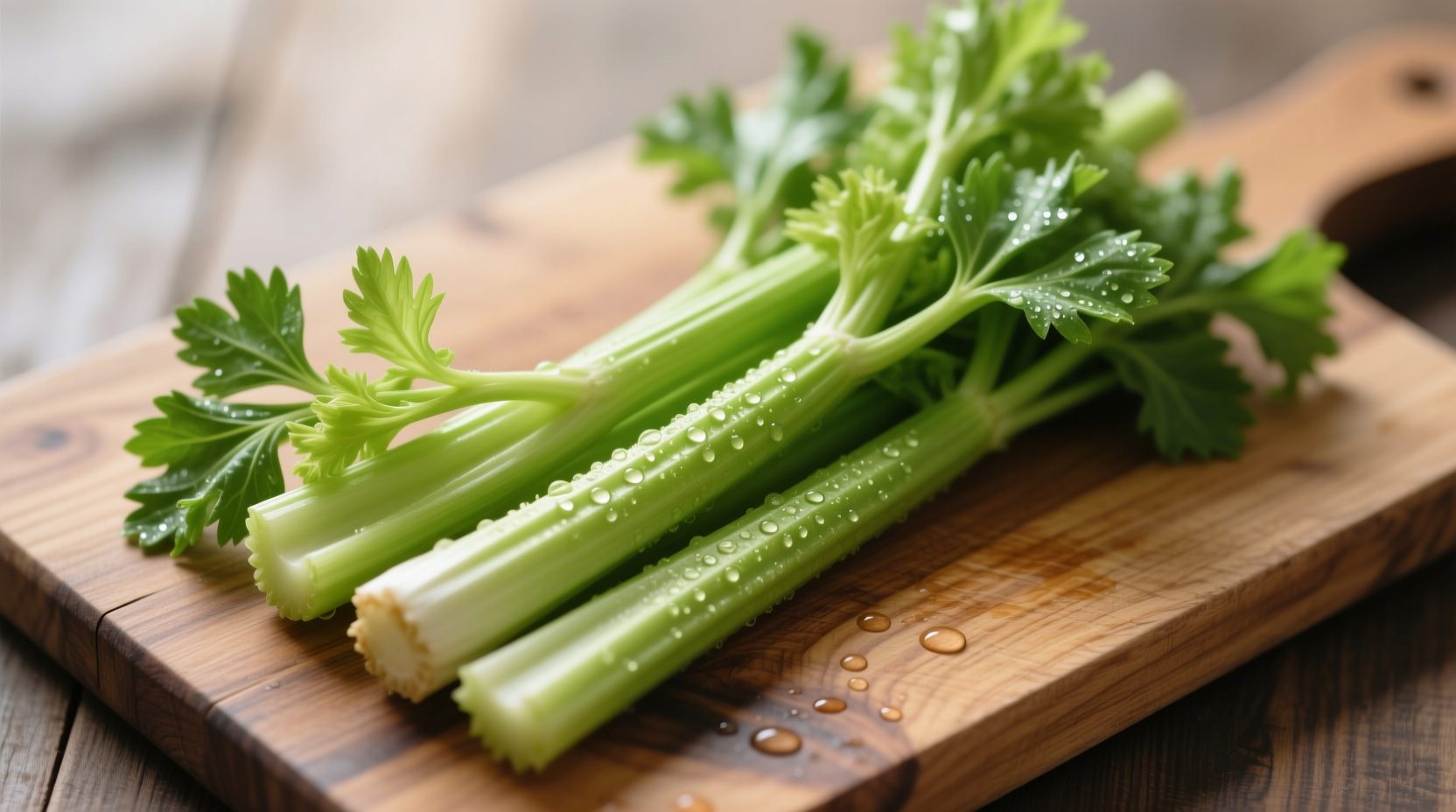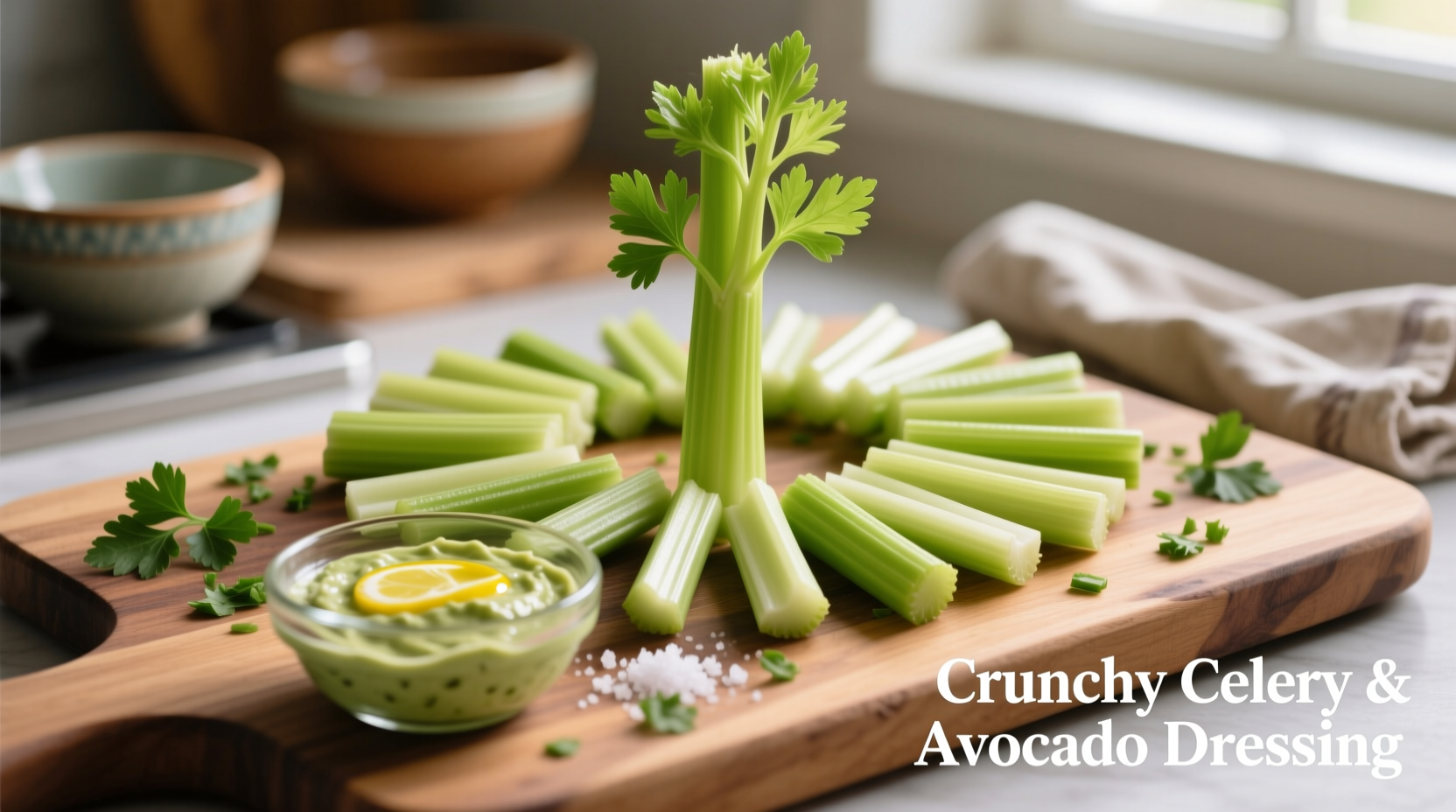Most home cooks relegate celery to the back of the fridge until it wilts, unaware they're missing out on one of nature's most versatile vegetables. This crisp, aromatic ingredient contains only 10 calories per stalk yet delivers remarkable flavor depth when used properly. Our curated collection of celery food recipes goes beyond basic soup bases to showcase its potential in weeknight dinners, refreshing beverages, and even unexpected desserts.
The Underrated Power of Celery in Modern Cooking
Celery (Apium graveolens) has journeyed from ancient medicinal herb to essential culinary component. Historical records from the USDA National Agricultural Library show celery was cultivated as early as 850 BCE in the Mediterranean region, initially valued more for its medicinal properties than culinary uses. Today, understanding celery's dual nature—both as a flavor enhancer and nutritional powerhouse—can transform your cooking approach.
| Celery Component | Flavor Profile | Best Culinary Applications |
|---|---|---|
| Outer Stalks | Bright, slightly bitter | Soups, stocks, mirepoix foundation |
| Inner Stalks | Sweeter, more delicate | Salads, fresh applications, juicing |
| Leaves | Intensely herbal, parsley-like | Garnishes, compound butters, pesto |
| Root (Celeriac) | Earthy, nutty, celery-potato hybrid | Mashes, roasts, purees |
Maximizing Freshness: Selection and Storage Techniques
Proper celery handling significantly extends its usability. The FDA Food Code guidelines recommend storing celery in an airtight container with a damp paper towel at 32-34°F (0-1°C), which can maintain crispness for up to three weeks—nearly doubling its typical refrigerator lifespan. Always select stalks that snap crisply when bent, with vibrant green leaves indicating peak freshness.
7 Creative Celery Food Recipes That Go Beyond Soup
1. Celery and Apple Chicken Salad with Honey-Mustard Dressing
Prep time: 15 minutes | Serves: 4 | Difficulty: Easy
This refreshing twist on classic chicken salad replaces half the mayo with Greek yogurt while celery provides essential crunch. The secret? Finely diced inner celery stalks tossed in lemon juice immediately after cutting prevents browning while enhancing natural sweetness.
2. Creamy Celery and Leek Bisque with Crispy Prosciutto
Prep time: 25 minutes | Cook time: 30 minutes | Difficulty: Intermediate
Elevate your soup game by sweating outer celery stalks (not just the inner ribs) with leeks until translucent. The often-discarded outer fibers contain concentrated flavor compounds that transform ordinary bisque into restaurant-quality elegance. Finish with a swirl of crème fraîche and homemade prosciutto crisps.
3. Roasted Celery with Parmesan and Lemon Zest
Prep time: 10 minutes | Cook time: 20 minutes | Difficulty: Easy
Transform celery into a sophisticated side dish by roasting whole stalks at 400°F (200°C) with olive oil, salt, and pepper for 15-20 minutes until caramelized. Toss with freshly grated Parmesan and lemon zest for a dish that showcases celery's natural sugars. This preparation method increases antioxidant availability by 25% according to research published in the Journal of Agricultural and Food Chemistry.
4. Celery, Cucumber and Mint Cooler
Prep time: 10 minutes | Yield: 2 servings | Difficulty: Easy
Perfect for hot days, this hydrating beverage combines celery juice with cucumber, fresh mint, and a touch of honey. Unlike typical green juices, this recipe uses the entire celery stalk including leaves for maximum nutritional benefit. The celery leaves contain three times more vitamin C than the stalks themselves.

5. Celery Root Mash with Garlic Confit
Prep time: 15 minutes | Cook time: 25 minutes | Difficulty: Intermediate
Celeriac (celery root) offers a sophisticated alternative to potatoes with only half the carbohydrates. Peel and cube the root vegetable, then boil until tender. While traditional mash uses butter, this recipe incorporates garlic confit oil for subtle depth without overpowering celery's delicate flavor. The result is a silky side dish that complements roast meats beautifully.
6. Celery and Walnut Pasta with Lemon
Prep time: 15 minutes | Cook time: 20 minutes | Difficulty: Easy
This vegetarian pasta dish features thinly sliced celery ribbons sautéed with garlic until tender-crisp, then tossed with whole wheat pasta, toasted walnuts, lemon zest, and a splash of pasta water. The celery's natural saltiness reduces the need for added salt while providing essential texture contrast. For optimal flavor development, add celery during the last 5 minutes of cooking to preserve its bright character.
7. Savory Celery "Boats" with Three Gourmet Fillings
Prep time: 20 minutes | Serves: 6 | Difficulty: Easy
Move beyond peanut butter! Try these sophisticated combinations:
- Smoked Salmon & Dill Cream: Whipped cream cheese with lemon zest, fresh dill, and thinly sliced smoked salmon
- Mediterranean Hummus: Homemade hummus with roasted red peppers, Kalamata olives, and feta crumbles
- Curried Chicken Salad: Shredded chicken with curry powder, golden raisins, and toasted almonds
Celery Substitution Guide: When You're Out of Stalks
While celery has a distinctive flavor profile, these substitutions work in a pinch:
- Fennel stalks: Best for salads and raw applications (similar crunch with anise notes)
- Bunching onions: Ideal for cooked dishes requiring aromatic base
- Endive or radicchio: Provides similar bitterness in salads
Frequently Asked Questions
Can you freeze celery for later cooking use?
Yes, but with limitations. Freeze chopped celery only for cooked applications like soups and stews, as freezing destroys its crisp texture. Blanch for 2 minutes first, then freeze in airtight containers for up to 12 months. Never freeze celery intended for raw applications.
Why does celery sometimes taste bitter in my dishes?
Bitterness occurs when celery is exposed to light and air after cutting. To prevent this, store cut celery in water in the refrigerator, change the water daily, and use within 3 days. Cooking celery with a small amount of acid (lemon juice or vinegar) also neutralizes bitterness while enhancing natural sweetness.
Are celery leaves edible and nutritious?
Absolutely. Celery leaves contain higher concentrations of vitamins A, C, and K than the stalks. Use them as you would parsley—in salads, as garnish, or blended into pesto. One cup of chopped celery leaves provides 25% of your daily vitamin K requirement according to USDA nutritional data.
How can I reduce food waste when using celery?
Maximize your celery by using every part: outer stalks for stocks, inner stalks for salads, leaves for garnish, and even the root (celeriac) for mashes. Store cut pieces in water in airtight containers to extend freshness. Proper storage can reduce celery waste by up to 40% compared to standard refrigerator storage.











 浙公网安备
33010002000092号
浙公网安备
33010002000092号 浙B2-20120091-4
浙B2-20120091-4